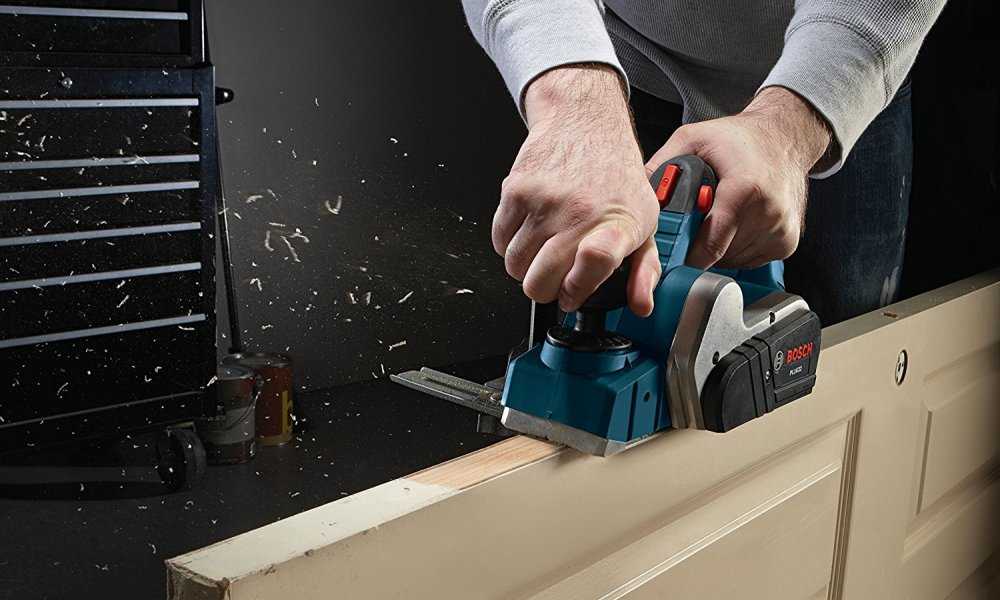How To Plane A Door Like A Professional Carpenter

It is easy to take the doors in your home for granted. That is until they start binding or sticking, or you install new flooring and you have a height clearance problem.
The recommended gap between a door and frame is around 1/8 – 1/4 of an inch on all sides.
Once you determine that the door isn’t sticking due to a loose hinge or two, which is easy enough to fix with a screwdriver, you may find that you need to plane, or shave, the excess wood from the problem side so you can get your door working again.
So how do you plane a door without taking it off? By using an old hand planer, of course. The sharp and angled blade allows you to shave thin strips from the wood as you move it along the surface of the door. You can do this by using a belt sander or an benchtop planer, but sometimes the simplest tool can do the trick too.
Materials and Tools That You Will Need
- Paper or cardboard
- Ruler
- Pencil
- Doorstop
- Carpenter’s compass
- Hand Wood planer

How to Plane a Door without Taking It Off
Step 1
Start by opening and closing the door a couple of times so you can see where it is rubbing or sticking. Run a piece of thin cardboard or folded paper in between the door and the jamb to identify the start and end point for the area that needs to be planed. Use a pencil to mark this area on the side of the door, not on the edge.
Step 2
Use your ruler to measure 1/8 inch from the jamb to the start and end points on the door. Draw a straight line between the start and end point using your ruler. Although this may only be a short length, it is important to be able to see the correct width. If you are planing more than 6 inches, use a carpenter’s compass to mark your planer’s route.

Step 3
Immobilize your door by using the doorstop so that you can plane without the door moving. If you find that the door is still wobbling, use a second doorstop on the other side of the door.
Step 4
If you are planing a vertical edge, shave with the wood grain. If you are working on a horizontal edge, start at the outside edges and work your way towards the center.
Ensure that you apply a firm but light pressure on your planer (My favorite wood planer is the Bosch 18V Cordless Planer ) so you don’t shave off too much or gouge the wood by mistake. Remember: unlike hair, trimmed wood doesn’t grow back. It is better to take off less and have to do a few passes than take off too much.
If you need to remove more than 1/8 inch from the door, you may need to use a belt sander or electric planer. However, bear in mind that, while the job will be simpler and faster, you will have less control. Move carefully and slowly when using power tools so you do not create any gouges or dips.
Step 5
Once you have planed the necessary amount from the problem side, open and close it a few times. If you find that it is still sticking, shave a bit more. Continue opening and closing the door and shaving until it no longer sticks.
Sand the section that you planed, then prime it, and lastly paint it. Leave the door to dry and make sure you place a doorstop in place so the door doesn’t unintentionally close while it is drying.
FINAL VERDICT
Planing your door without taking it off the frame is more convenient and will save more time. While planing is usually a last resort, as it means you will have to touch up the area with a sealant or finish so the door looks uniform, it is not too difficult. The top of the door and the latch side of the door can easily be planed without taking the door off.
However, if you need to work on the bottom of the door, you will need to take the door off of its hinges to access the bottom section. This will only be the case if you have installed new flooring though, so most of the time, it is an easy fix.
